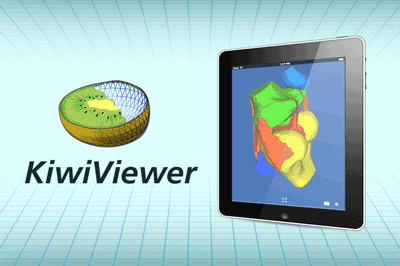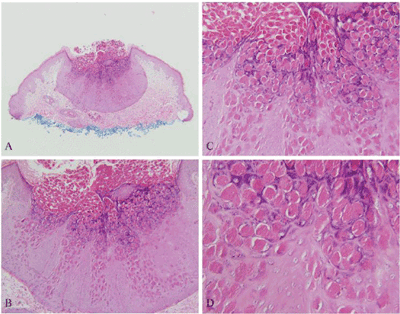October 2011: Kitware News Part I

Kitware Ranks #1572 on 2011 Inc. 5000 List
Inc. magazine announced its fifth annual 500|5000 list, an exclusive ranking of the nation’s fastest-growing private companies. Kitware ranked #1572 overall, based on three-year revenue growth of 175%, and #118 within its industry.
This is the fourth consecutive year that Kitware has been included on the list. The company attributes this to its talented workforce and open source business model. By providing a fun, flexible, and collaborative work environment, Kitware employees see their contributions make a difference in major areas of scientific and medical research.
Kitware Awarded DOE SBIR Funding
The United States Department of Energy (DOE) has awarded Kitware $150,000 in SBIR funding to develop ClimatePipes, an analysis tool that provides simplified access to computer model outputs from long-term climate change projections performed by the U.S. Global Change Research Program.
Kitware believes that effective analysis in climate science relies on having a cyberinfrastructure that enables people to discover, access, manipulate, and visualize large and complex datasets of interest. ClimatePipes will facilitate access to such critical data for non-researchers, as opposed to a more technical audience. The solution aims to be the platform for user-friendly data access, but not to replace high-end analysis tools for scientists. We plan to develop a tool that is simple, intuitive, and that can be used by non-researchers and non-programmers.
NA-MIC VTK Charts Breakout Session
Marcus Hanwell attended the NA-MIC-hosted 2011 Summer Project Week. He hosted a breakout session on VTK Chats, which discussed the wide range of 2D charts available in VTK and features associated with them. Marcus’ presentation included a demo of the current functionality, a hands-on tutorial of the charts application, and discussion of advanced interaction and chart matrices, linked selections, and future directions for the application.
The audience was very receptive and enthusiastic about the charting abilities of VTK, causing the discussion to go over time. The group provided great feedback, which will be incorporated into VTK charts in the future.
Marcus’ presentation can be found online at http://www.na-mic.org/Wiki/images/1/18/NA-MIC-VTK-Charts-2011.pdf.
Kitware Introduces KiwiViewer
In August, Kitware released KiwiViewer, a free, interactive application for the exploration of geometric datsets to the Apple app store. The Kitware and the National Alliance for Medical Image Computing (NAMIC) supported project enables users to access 3D datasets from email attachments or through Dropbox and easily pan, zoom, and rotate geometry with intuitive multi-touch gestures.

KiwiViewer is built on top of the new VES toolkit to support OpenGL ES rendering and multi-touch interaction, as well as portions of VTK for data loading and filtering. The application can load STL, OBJ and VTK surface geometry files.
KiwiViewer 0.0.2 was released in early September with additional support for iPhones, in addition to the iPad. Other updates in this release include support for scalar variables for displaying colors on surfaces, device rotation, reading MOVIE.BYU geometry (.g) files, and reading Protein Data Bank (.pdb) files.
Kitware will be demonstrating KiwiViewer at upcoming conferences throughout the Fall. If you would like to set up a meeting during one of these events, or schedule a phone conversation for discuss your mobile computing needs, please contact kitware@kitware.com.
NLM Microscopy Hackathon
Matt McCormick and Andient Enquobahrie attended a hackathon spear-headed by Luis Ibanez at the National Library of Medicine (NLM) campus in Bethesda, MD.
The primary goal of the session was to increase support in ITK for large datasets coming from the histopathology or microscopy communities. These large, multi-channel datasets typically come in as TIFF files, which can be stored in strips or tiles, holds custom header fields, and hold files larger than 4 GB.
Luis led the team to a major accomplishment of integrating LibTiff 4.0 Bete 7, which includes “Big TIFF” support. As a result, files larger than 4GB could easily be read. Matt and Andinet worked on additional support for ITK ImageIO based on the OpenSlide library for microscopy formats. There were some difficulties with the license (LGPL) and its dependencies (gilb), but good progress was made on the start of the ImageIO class.
Kitware Receives $300,000 in NIH Funding
The National Institutes of Health awarded Kitware two $150,000 grants to develop advanced software systems for enhancing digital pathology and remote-access microscopy.
For Phase I of the SBIR “An Open Source Digital Pathology System Supporting Multi-Touch Interaction,” Kitware will develop a freely-available, open-source system for processing slide image data for integration of digital pathology into hospital-wide clinical information systems. This system will help digitalize pathology and incorporate the images into electronic medical records, allowing for quicker, more efficient patient care.
The Phase I grant “Large-Scale Time Lapse Imaging to Monitor Neuroplasticity and Circuit Function” will include development of an open-source system for managing the acquisition, storage, and retrieval of massive time-lapse microscopy datasets.
Charles Law will lead both projects as the principle investigator. Dr. Law’s work demonstrates Kitware’s longstanding commitment to applying open-source systems to solving timely biomedical research challenges.

Open Source Class at RPI – Version 5.0
This year Kitware continues with the fifth version of the Open Source Software Practices class at the Rensselaer Polytechnic Institute (RPI) in Troy, NY. There are 34 registered computer science and electrical engineering students who will be learning about the many aspects of open source software. We will cover legal aspects such as copyrights, patents, trademarks and software licensing; engineering aspects such as revision control systems, quality assurance and community collaboration; economics aspects leading to successful business models; and social aspects related to human motivation, creativity, innovation and civil responsibility.
One of the novelties of this version 5.0 is that the class started using the Open Source course management system Moodle, to enable students to share teaching materials and to present tests directly in the system.
The class is an activity sponsored by the Rensselaer Center for Open Source (RCOS) and the result of the indefatigable support of Professor Khrisnamoorthy. The class also got its own website [1], from which students get access to the Moodle system and to the class Wiki [2]. We started hosting the lectures in github [3], and students are now using LaTeX and the Beamer package. As in previous instances of the class, all the teaching materials are distributed under the Creative Commons by Attribution license 3.0.
Thanks to the Kitware employees who volunteer their time to share their experience, in particular Will Schroeder, Bill Hoffman, Marcus Hanwell and Yvette Fitzgerald.
[1] http://www.opensourcesoftwarepractice.org
[2] http://public.kitware.com/OpenSourceSoftwarePractice/index.php/Fall2011/Main_Page
[3] https://github.com/luisibanez/OpenSourceSoftwarePracticeCourse
Continue to Kitware News Part II.